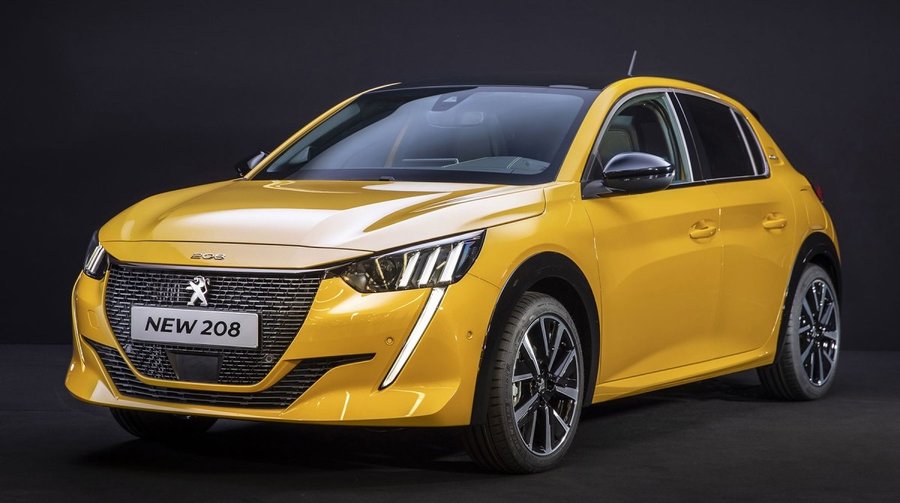2019 Peugeot 208 Revealed With More Style And Sophistication

Less than a month after Renault introduced the fifth-generation Clio, another French marque is unveiling its all-new supermini ahead of the 2019 Geneva Motor Show debut where the two will clash. Redesigned from the ground up, the Peugeot 208 is arguably one of the most attractive models in Europe's crowded B segment. It's more than just a pretty face as PSA's overhauled subcompact hatchback has gone through skin-deep changes.
As indicated by numerous spy shots showing partially camouflaged prototypes, the 2019 Peugeot 208 takes after the stylish 508 fastback when it comes to the exterior design. Its predecessor was already quite posh, but the new Ford Fiesta rival takes things a step further and adds sophistication inherited from the company's flagship model.
Peugeot's tiger claw motif looks better than ever and in high-end trims, the 208 comes equipped with full-LED headlights lending the small hatchback an upscale vibe. Wheels up to 17 inches in size are available, along with a black roof to contrast the main body color. As with the 508, the model's designation adorns the hood, right above the lion logo, as a nod to Peugeots from yesteryear.
Vast improvements have also been made inside where the 2019 Peugeot 208 uses the company's fantastic i-Cockpit making some of its rivals look ancient. Mounted up high, the digital instrument cluster is complemented by a touchscreen available in 5-, 7- and 10-inch sizes. Most of the controls have been integrated into the infotainment system, so physical buttons and switches have been kept down to a minimum. Glossy black surfaces are combined with faux carbon fiber accents, while the sporty steering wheel with flat upper and lower areas might make you think you're in a hot hatch.
Switching from the old PF1 platform to the new Common Modular Platform (CMP) has allowed Peugeot's engineers to shave off 30 kilograms (66 pounds) of fat and at the same time boost aerodynamics. The fresh hardware also pays dividends in terms of comfort as noise, vibration, and harshness (NVH) levels are down compared to the model it replaces.
Power comes from either a three-cylinder 1.2-liter turbocharged gasoline engine or a four-cylinder 1.5-liter diesel. The gasoline unit will be offered with 75 horsepower and a five-speed manual, followed by a 100-hp variant with a six-speed manual or an eight-speed automatic, and a beefier 130-hp configuration exclusively with the auto. The diesel puts out 100 hp and comes only with the do-it-yourself six-speed 'box.
Peugeot is also eager to show the fully electric e-208, with 136 hp and an instant torque of 260 Newton-meters (192 pound-feet) on tap. It sits on the related e-CMP platform and has enough electric punch to hit 62 mph (100 kph) from a standstill in a decent 8.1 seconds when in sport mode. Alternatively, there's a normal mode for day-to-day use, and an eco mode when you want to maximize efficiency to get the highest possible range.
You'll be happy to hear the 50-kWh battery pack is installed underneath the cargo floor, which means it won't negatively impact the luggage area. The e-208 offers the same volume as the conventionally powered model and has enough juice for 340 km (211 miles) as per the more realistic WLTP or 450 km (280 miles) using NEDC.
When it comes to recharging the battery, it takes eight hours when using a 7.4-kW charger or 5 hours and 15 minutes when feeding on an 11-kW charger. Where available, the new e-208 can recharge 80 percent of its battery in only 30 minutes thanks to 100-kW rapid charging. Peugeot guarantees the battery pack will still have 70 percent of its capacity after eight years or 160,000 km (99,420 miles).
Peugeot will sell the revamped 208 in Access, Active, Allure, GT Line, and GT trims, plus the zero-emissions e-208.
